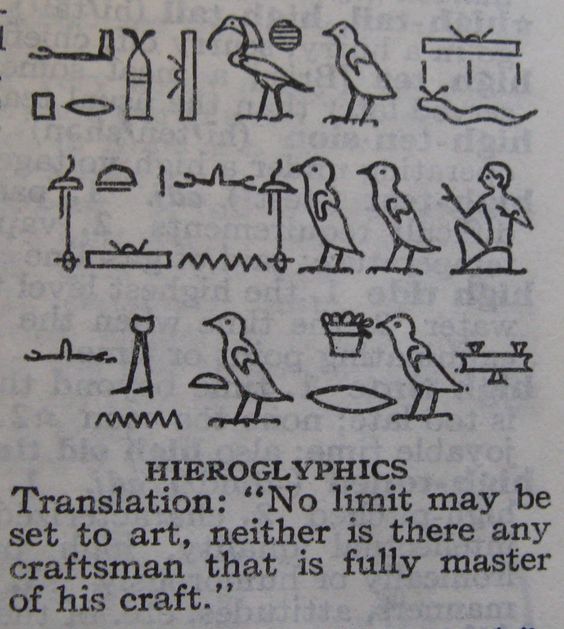[Egyptian] Typing Egyptian hieroglyphs on digital platforms
So…
For some unknown reason, I felt the urge to re-start learning the Ancient Egyptian just after I finished designing my new GitHub homepage. In many ways, I knew that re-learning the Hieroglyphic Egyptian was a bad idea as I failed miserably the last time I tried learning it. Also, as the current era semi-forces me to keep my knowledge in digital format, learning Egyptian as a man in early 30s meant that he had no other choice but to learn how to write hieroglyphs or hieratic or demotic scripts digitally. The fact that I’d personally be very interested in learning how to write and speak in Coptic is not helping at all. It is probably a good thing that my miserable failure in learning Egyptian is helping me not to study Coptic–PhD is already a full-time job.
Little comment on writing in Coptic
If I started learning straight from Coptic and was majoring linguistics, I’d probably enjoy making comparisons between the hieroglyphic and Coptic vocabulary. As Coptic writing system is alphabetic, hence; the vowels are fully known in the Coptic languages unlike the other Egyptian writing systems including the hieroglyphic, demotic and hieratic systems. Knowing Coptic would’ve reduced all the confusion I am having at the moment in learning Ancient Egyptian which would’ve even help me reading the hieroglyphic Egyptian with reconstructed vowels.
Just to show how easy it is to write things in Coptic, I’m including the table of Coptic alphabets below. Note that this table is not entirely correct as Coptic has numerous variations and dialects where the characters may look different in some texts. Also, some characters are omitted here as I simply could not study further into this topic.
| Coptic Alphabet (Majuscule, Minuscule) | Name | Pronunciation |
|---|---|---|
| Ⲁ , ⲁ | Alpha | /æ/, /ɑ/ |
| Ⲃ , ⲃ | Beta | /w/, final /b/ |
| Ⲅ , ⲅ | Gamma | /g/, /ɣ/ before Ⲁ,Ⲟ , Ⲱ |
| Ⲇ , ⲇ | Delta | /d/ |
| Ⲉ , ⲉ | Eey | /æ/,/ɑ/(ⲒⲈ=/e/) |
| Ⲋ , ⲋ | Soou | s͡t |
| Ⲍ , ⲍ | Zeta | /z/ |
| Ⲏ , ⲏ | Eta | /æ/, /ɑ/, /ɪ/ |
| Ⲑ , ⲑ | Thethe | /t/ |
| Ⲓ , ⲓ | Iota | /ɪ/, /j/ |
| Ⲕ , ⲕ | Kappa | /k/ |
| Ⲗ , ⲗ | Lola | /l/ |
| Ⲙ , ⲙ | Mey | /m/ |
| Ⲛ , ⲛ | Ney | /n/ |
| Ⲝ , ⲝ | Exi | /ks/ |
| Ⲟ , ⲟ | O | /o/ |
| Ⲡ , ⲡ | Pi | /b/ |
| Ⲣ , ⲣ | Roo | /ɾ/~/r/ |
| Ⲥ , ⲥ | Seema | /s/ |
| Ⲧ , ⲧ | Tav | /d/ (final [t]) |
| Ⲩ , ⲩ | Ua | /ɪ/,/w/(ⲞⲨ=/u/,/w/) |
| Ⲫ , ⲫ | Fi | /b/~/f/ |
| Ⲭ , ⲭ | Khi | /k/ |
| Ⲯ , ⲯ | Epsi | /bs/ |
| Ⲱ , ⲱ | Oou | /oː/ |
| Ⳍ , ⳍ | Hori | /h/ |
| Ϣ , ϣ | Shei | /ʃ/ |
| Ϥ , ϥ | Fei | /f/ |
| Ⳉ , ⳉ | Khai | /x/ |
| Ϫ , ϫ | Janja | /ɟ/ |
| Ϭ , ϭ | Shima | /ʃ/ |
| Ϯ , ϯ | Dei/Ti | /di/ |
| Ⳁ , ⳁ | Sampi | 900 |
It’d be intellectually satisfying if I’d, one day, be able to read, speak and write Boharic, Sahidic, Lycopolitan and Akhmimic Coptic languages, but that might only be possible if I somehow reach 500 years of age.
Will I ever write hieroglyphs on a digital platform?
Short answer is YES. However, looks like I need an intense practice in writing Unicode numbers… Cartouches are also difficult to write in digital formats…
I just heard of and downloaded a program called JSesh which, apparently, allows one to write hieroglyphs rather easily. At the moment I am writing this article, I am unable to trying the program out as the stamina has already ran out for today. I will come back to it sometime soon.
As a concluding remark, here is a lazy but useful test-sentence I write in hieroglyphic Egyptian: 
